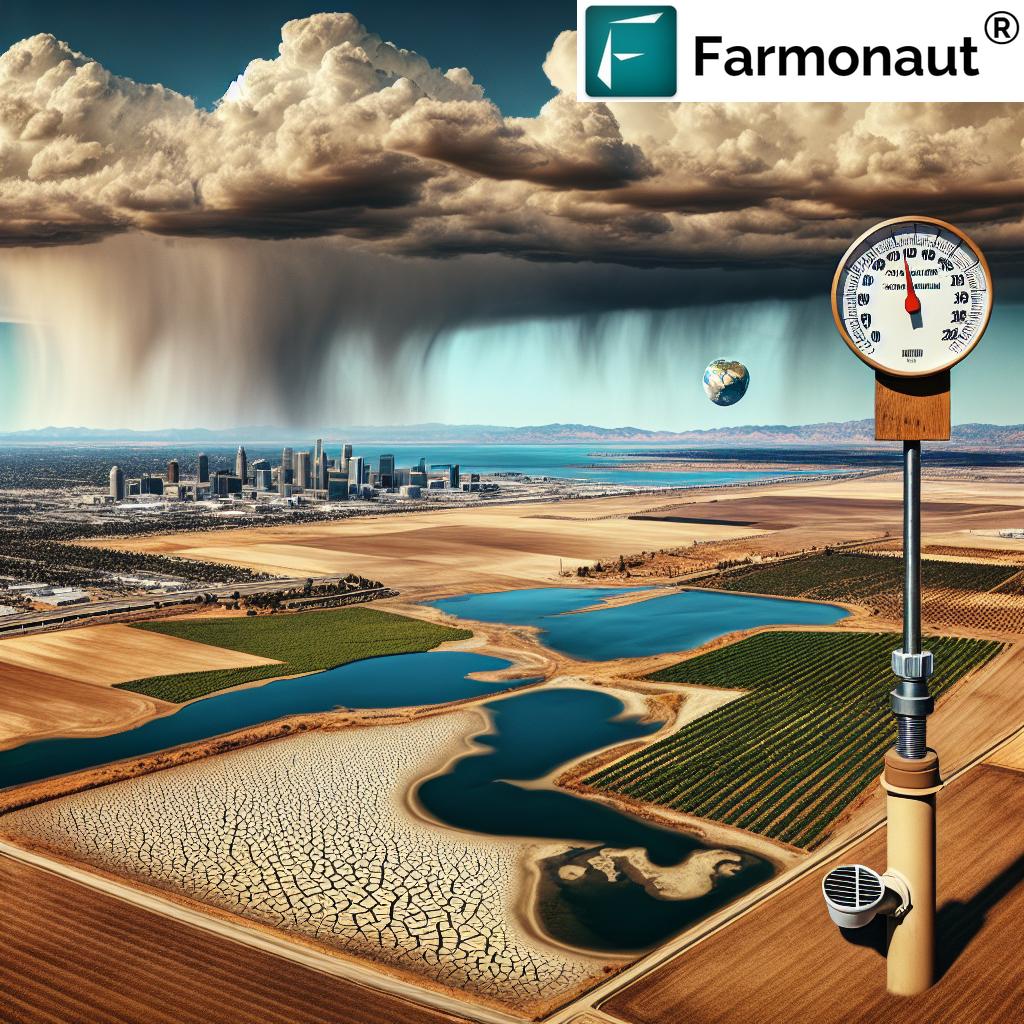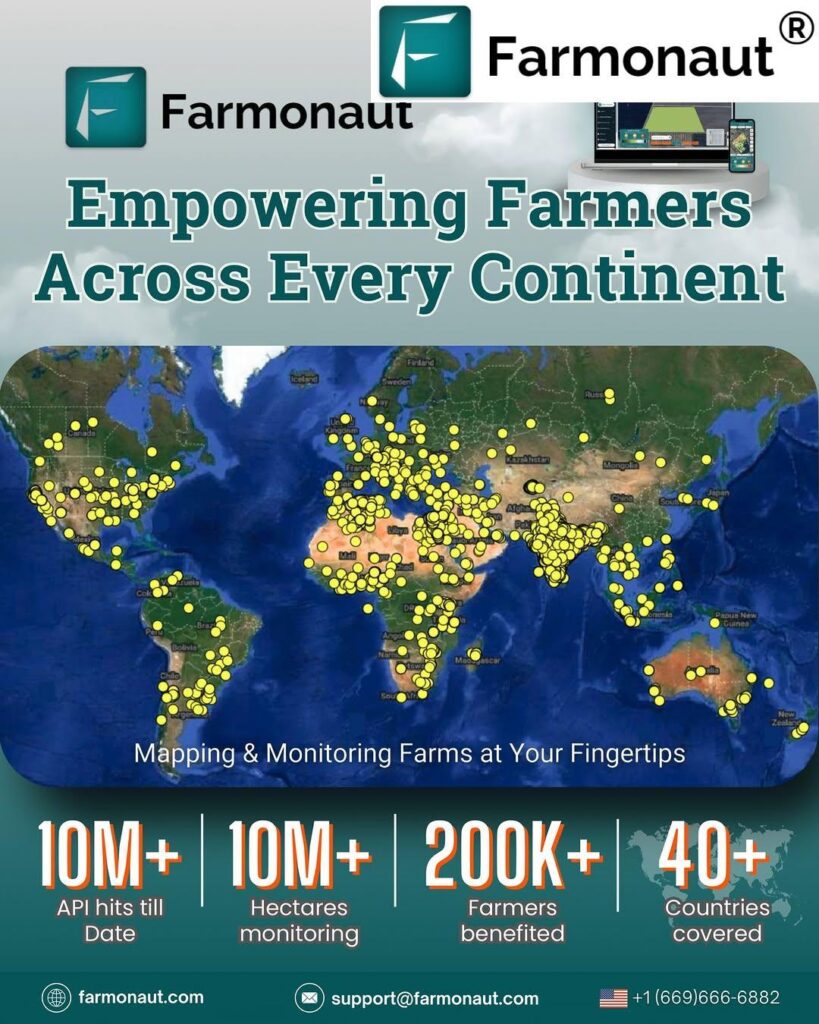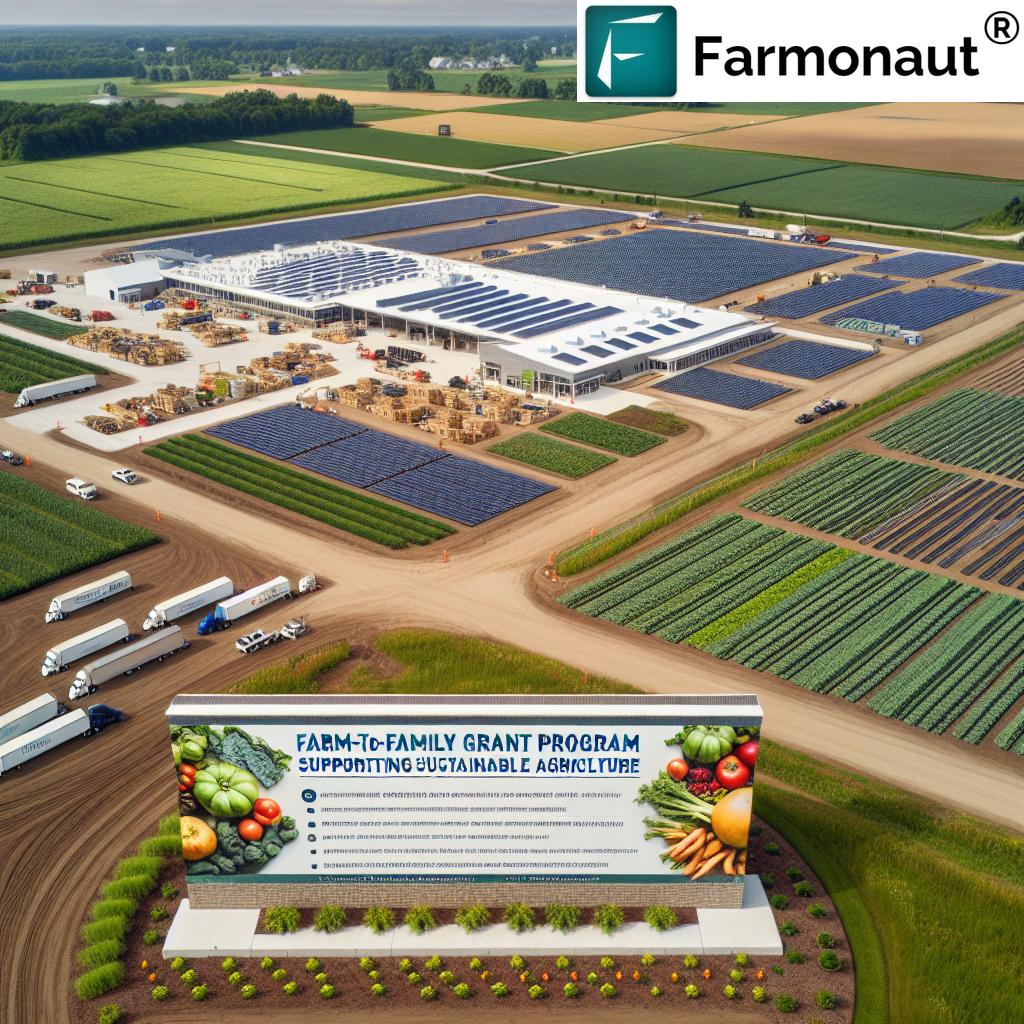Navigating Agricultural Economic Challenges: 2025 Outlook for Washington Farmers
“By 2025, U.S. farmers may face up to 30% reduction in crop prices due to trade wars and global market pressures.”
As we approach 2025, the agricultural landscape in Washington State and across the United States is poised for significant challenges. We, as industry experts and representatives of Farmonaut, are deeply concerned about the economic hurdles that farmers will face in the coming years. The intricate web of factors shaping the agricultural sector demands our attention and strategic planning.
The Current State of Washington’s Agricultural Economy
Washington’s agricultural industry, a cornerstone of the state’s economy, is facing unprecedented pressures. The convergence of global market forces, policy uncertainties, and environmental challenges is creating a perfect storm for farmers and agribusinesses alike. Let’s delve into the key factors influencing this outlook:
- Crop price fluctuations
- Trade war impacts
- Policy uncertainties
- Rising input costs
- Environmental challenges
Crop Prices and Market Volatility
One of the most pressing agricultural economic challenges in 2025 is the volatility in crop prices. Washington farmers, known for their diverse agricultural output including apples, wheat, and potatoes, are grappling with unpredictable market conditions. The farm economy uncertainty is palpable as global supply chains remain disrupted and demand patterns shift.
For instance, wheat prices, a crucial crop for Eastern Washington, have been on a rollercoaster ride. The crop price fluctuations are not just affecting farmers’ bottom lines but also their ability to plan for future seasons. This volatility is exacerbated by global events, including the ongoing trade war impact on agriculture.
Trade Wars and International Market Access
The trade war impact on agriculture continues to reverberate through Washington’s farming communities. Tariffs imposed on key trading partners like China have significantly affected export-dependent crops such as soybeans and apples. As we look towards 2025, the uncertainty surrounding international trade agreements and tariffs remains a critical concern for Washington farmers.
The repercussions of these trade disputes extend beyond immediate sales losses. They’re reshaping global agricultural trade flows, potentially leading to long-term shifts in market share and crop preferences. Washington farmers are thus faced with the challenge of adapting their production strategies to an ever-changing international market landscape.
Policy Uncertainties and Regulatory Changes
As we navigate through these turbulent times, the lack of clarity on agricultural policies adds another layer of complexity to farmers’ decision-making processes. The uncertainty surrounding renewable diesel tax credits and other agricultural policy changes is creating a hesitant business environment.
For Washington farmers, this policy ambiguity affects crucial decisions such as crop selection, investment in new technologies, and long-term land use planning. The potential shifts in support for biofuels, for instance, could have significant implications for corn and soybean farmers in the state.
Rising Input Costs and Resource Management
Another critical challenge facing Washington farmers as we approach 2025 is the steady rise in input costs. From fertilizers to fuel, the expenses associated with crop production are increasing, squeezing profit margins for many farmers. This trend is particularly concerning given the backdrop of uncertain crop prices.
To address these rising costs, farmers are increasingly turning to precision agriculture technologies. Tools like Farmonaut’s satellite-based crop monitoring system can help optimize resource use, potentially offsetting some of these increased expenses. By providing real-time data on crop health and soil conditions, such technologies enable farmers to make more informed decisions about input application, potentially reducing waste and improving efficiency.
Environmental Challenges and Climate Change
The agricultural sector in Washington is increasingly feeling the impacts of climate change. Extreme weather events, shifting precipitation patterns, and rising temperatures are creating new challenges for crop management and yield stability. As we look towards 2025, these environmental factors are expected to play an even more significant role in shaping the agricultural landscape.
Adapting to these changes requires a combination of innovative farming practices and technology adoption. Precision agriculture tools, like those offered by Farmonaut, can help farmers monitor crop health and respond quickly to changing environmental conditions. By leveraging satellite imagery and AI-driven insights, farmers can make more informed decisions about irrigation, pest management, and harvest timing.
The Role of Technology in Navigating Challenges
In the face of these multifaceted challenges, technology emerges as a crucial ally for Washington farmers. Advanced agricultural technologies offer the potential to improve efficiency, reduce costs, and increase resilience in the face of economic and environmental uncertainties.
Farmonaut’s suite of tools, including satellite-based crop monitoring and AI-driven advisory systems, represents the cutting edge of these technological solutions. By providing real-time data on crop health, soil moisture levels, and weather patterns, Farmonaut empowers farmers to make data-driven decisions that can optimize yields and resource use.
“Agricultural companies are considering cutting up to 15% of jobs to maintain profitability amid economic challenges in 2025.”
Economic Indicators for Washington Farmers (2025 Outlook)
| Indicator | 2024 Value (Estimated) | 2025 Projection | Trend | Impact on Farmers |
|---|---|---|---|---|
| Wheat Price ($/bushel) | 5.50 | 5.25 | ↓ | High |
| Apple Price ($/lb) | 0.35 | 0.33 | ↓ | High |
| Fertilizer Cost ($/ton) | 450 | 475 | ↑ | High |
| Fuel Cost ($/gallon) | 3.50 | 3.75 | ↑ | Medium |
| Trade Tariffs (%) | 15 | 18 | ↑ | High |
| Weather-Related Risks (Scale 1-10) | 6 | 7 | ↑ | High |
| Government Subsidies ($ billion) | 20 | 18 | ↓ | Medium |
Strategies for Washington Farmers to Navigate 2025 Challenges
As we face these daunting challenges, it’s crucial for Washington farmers to adopt proactive strategies. Here are some key approaches that can help navigate the turbulent agricultural landscape of 2025:
- Diversification of Crops: Relying on a single crop can be risky in volatile markets. Diversifying crop portfolios can help spread risk and take advantage of different market opportunities.
- Adoption of Precision Agriculture: Leveraging technologies like Farmonaut’s satellite-based crop monitoring can optimize resource use and improve yields.
- Exploration of Value-Added Products: Processing raw agricultural products into value-added goods can open new market opportunities and potentially increase profits.
- Formation of Cooperatives: Joining or forming cooperatives can give farmers more bargaining power in the market and help share resources and knowledge.
- Investment in Sustainable Practices: Adopting sustainable farming methods can not only reduce input costs but also appeal to environmentally conscious consumers.
The Impact of Biofuel Policies on Washington Agriculture
The biofuel industry outlook is a critical factor shaping the agricultural landscape in Washington. As we approach 2025, the uncertainty surrounding renewable energy policies, particularly renewable diesel tax credits, is causing significant concern among farmers and agribusinesses.
The potential shifts in biofuel policies could have far-reaching effects on crop demand and prices. For instance, changes in support for ethanol production could impact corn farmers, while alterations in biodiesel policies could affect soybean growers. This uncertainty makes it challenging for farmers to plan their crop rotations and invest in necessary equipment.
Soybean Trading Pressures and Global Market Dynamics
Washington’s soybean farmers are facing particularly intense pressures as we look towards 2025. The combination of trade war impacts and shifting global demand patterns is creating a complex and challenging environment for soybean producers.
The soybean trading pressures are not just a result of tariffs but also changing consumer preferences and the rise of alternative protein sources. As plant-based meat substitutes gain popularity, the traditional demand for soybean meal in animal feed may face new challenges. Washington farmers will need to closely monitor these trends and potentially explore new markets or uses for their soybean crops.
Farm Input Costs and Financial Management
The rising farm input costs are a significant concern for Washington farmers as we approach 2025. From seeds and fertilizers to machinery and labor, the expenses associated with running a farm are steadily increasing. This trend, combined with the uncertainty in crop prices, is putting severe pressure on farm profitability.
To address these challenges, farmers are exploring various financial management strategies. These include:
- Careful budgeting and cost tracking
- Exploring alternative financing options
- Investing in efficiency-improving technologies
- Considering crop insurance to mitigate risks
Tools like Farmonaut’s satellite-based crop monitoring can play a crucial role in optimizing resource use and potentially reducing input costs. By providing real-time data on crop health and soil conditions, these technologies enable more precise application of inputs, potentially leading to significant cost savings.
The Role of Government Policies and Support
As we navigate the challenging agricultural landscape of 2025, the role of government policies and support programs becomes increasingly crucial. Washington farmers are closely watching developments in agricultural policy, hoping for measures that can provide some stability in these uncertain times.
Key areas of focus include:
- Trade negotiations and tariff policies
- Farm Bill provisions and subsidy programs
- Environmental regulations and conservation incentives
- Research and development funding for agricultural innovations
The interplay between these policies and market forces will significantly shape the opportunities and challenges facing Washington farmers in 2025 and beyond.
Leveraging Technology for Farm Management
In the face of these economic challenges, technology emerges as a critical tool for Washington farmers. Advanced farm management solutions, like those offered by Farmonaut, can provide valuable insights to help navigate these turbulent times.
Farmonaut’s satellite-based crop monitoring system offers several key benefits:
- Real-time crop health monitoring
- Precise irrigation management
- Early detection of pest and disease issues
- Yield prediction and harvest planning
By leveraging these technologies, farmers can make more informed decisions, potentially improving yields and reducing costs in the face of economic pressures.
Building Resilience in Washington’s Agricultural Sector
As we look towards 2025, building resilience in Washington’s agricultural sector is paramount. This involves not just adapting to current challenges but also preparing for future uncertainties. Key strategies for enhancing resilience include:
- Diversification: Both in terms of crops grown and markets served
- Education and Skill Development: Continual learning about new farming techniques and technologies
- Community Collaboration: Sharing resources and knowledge among farmers
- Sustainable Practices: Adopting methods that preserve soil health and water resources
- Financial Planning: Developing robust risk management strategies
By focusing on these areas, Washington farmers can better position themselves to weather the economic storms ahead and emerge stronger on the other side.
The Future of Farming in Washington
As we conclude our outlook for 2025, it’s clear that Washington’s agricultural sector faces significant challenges. However, with challenges come opportunities for innovation and growth. The farmers who can adapt to these changing conditions, leveraging technology and sustainable practices, will be best positioned to thrive in the future agricultural landscape.
While the road ahead may be challenging, the resilience and innovation of Washington’s farming community provide reasons for optimism. By staying informed, embracing new technologies, and working together, Washington farmers can navigate these turbulent times and continue to play a vital role in feeding the nation and the world.
FAQ Section
Q: What are the main economic challenges facing Washington farmers in 2025?
A: The main challenges include crop price fluctuations, trade war impacts, rising input costs, policy uncertainties, and environmental challenges due to climate change.
Q: How can technology help farmers navigate these challenges?
A: Technologies like Farmonaut’s satellite-based crop monitoring can help optimize resource use, improve yields, and provide valuable data for decision-making.
Q: What strategies can farmers adopt to build resilience?
A: Key strategies include crop diversification, adoption of precision agriculture, exploration of value-added products, joining cooperatives, and investing in sustainable practices.
Q: How might biofuel policies affect Washington agriculture?
A: Changes in biofuel policies, particularly renewable diesel tax credits, could significantly impact crop demand and prices, especially for corn and soybean farmers.
Q: What role does government policy play in addressing these challenges?
A: Government policies on trade, farm subsidies, environmental regulations, and research funding will significantly shape the opportunities and challenges facing Washington farmers.
Conclusion
As we navigate the complex agricultural landscape approaching 2025, it’s clear that Washington farmers face significant economic challenges. From crop price fluctuations to trade war impacts and policy uncertainties, the road ahead is fraught with obstacles. However, by leveraging advanced technologies like Farmonaut’s satellite-based crop monitoring, adopting resilient farming strategies, and staying informed about market trends, farmers can position themselves to weather these storms.
The agricultural sector volatility we’re witnessing is unprecedented, but so too are the tools and knowledge at our disposal. By embracing precision agriculture, diversifying crops, and focusing on sustainable practices, Washington’s farming community can not only survive these challenges but potentially thrive in the face of adversity.
As we look to the future, the importance of community collaboration, continuous learning, and adaptability cannot be overstated. The farmers who can flexibly respond to changing market conditions, leverage data-driven insights, and innovate in their practices will be best positioned for success in 2025 and beyond.
While the outlook may seem daunting, the resilience and ingenuity of Washington’s agricultural sector provide reasons for cautious optimism. By working together and embracing the tools of the future, we can navigate these turbulent times and continue to uphold Washington’s proud farming legacy.
Earn With Farmonaut: Affiliate Program
Earn 20% recurring commission with Farmonaut’s affiliate program by sharing your promo code and helping farmers save 10%. Onboard 10 Elite farmers monthly to earn a minimum of $148,000 annually—start now and grow your income!














